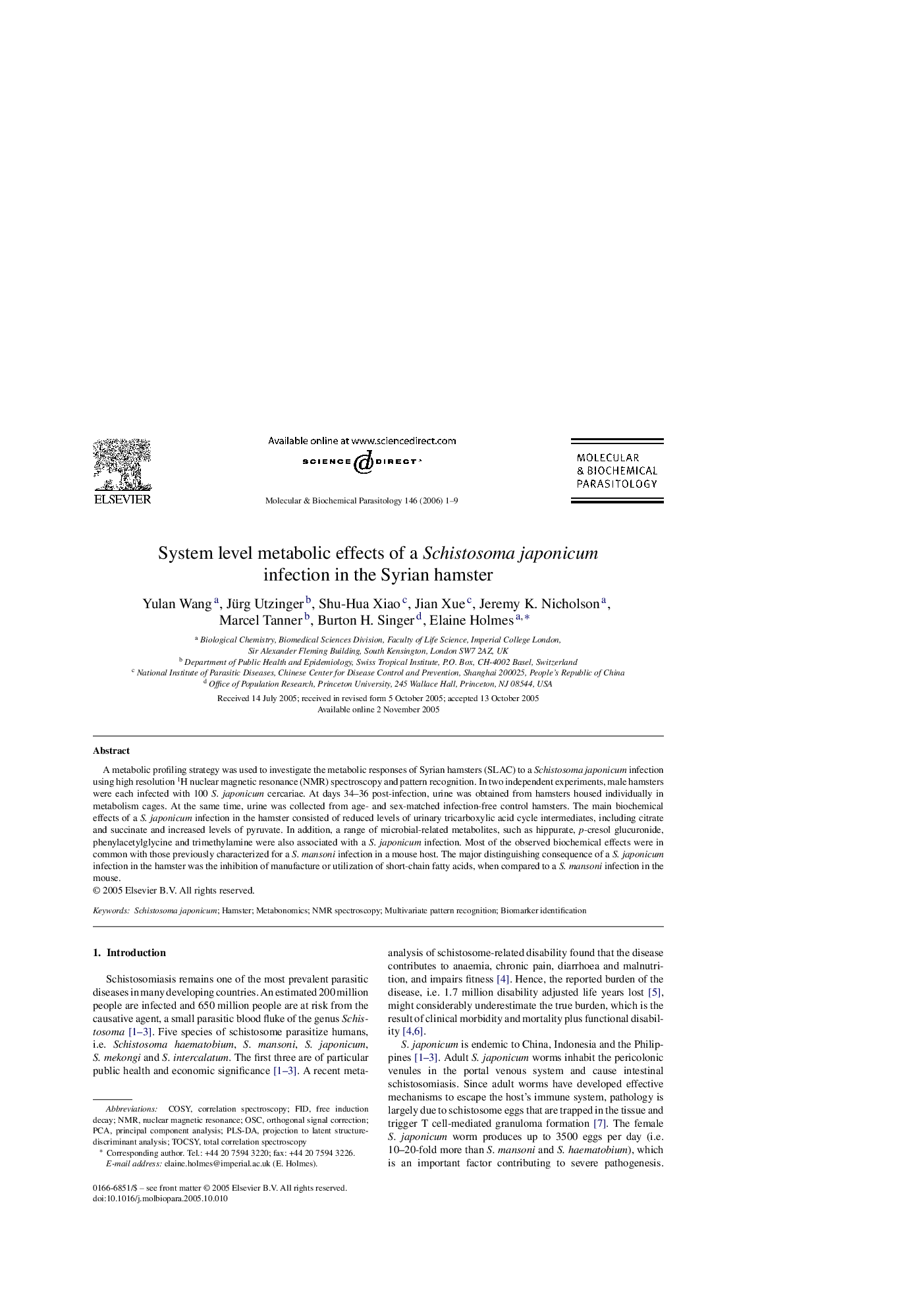| Article ID | Journal | Published Year | Pages | File Type |
|---|---|---|---|---|
| 2830372 | Molecular and Biochemical Parasitology | 2006 | 9 Pages |
A metabolic profiling strategy was used to investigate the metabolic responses of Syrian hamsters (SLAC) to a Schistosoma japonicum infection using high resolution 1H nuclear magnetic resonance (NMR) spectroscopy and pattern recognition. In two independent experiments, male hamsters were each infected with 100 S. japonicum cercariae. At days 34–36 post-infection, urine was obtained from hamsters housed individually in metabolism cages. At the same time, urine was collected from age- and sex-matched infection-free control hamsters. The main biochemical effects of a S. japonicum infection in the hamster consisted of reduced levels of urinary tricarboxylic acid cycle intermediates, including citrate and succinate and increased levels of pyruvate. In addition, a range of microbial-related metabolites, such as hippurate, p-cresol glucuronide, phenylacetylglycine and trimethylamine were also associated with a S. japonicum infection. Most of the observed biochemical effects were in common with those previously characterized for a S. mansoni infection in a mouse host. The major distinguishing consequence of a S. japonicum infection in the hamster was the inhibition of manufacture or utilization of short-chain fatty acids, when compared to a S. mansoni infection in the mouse.
